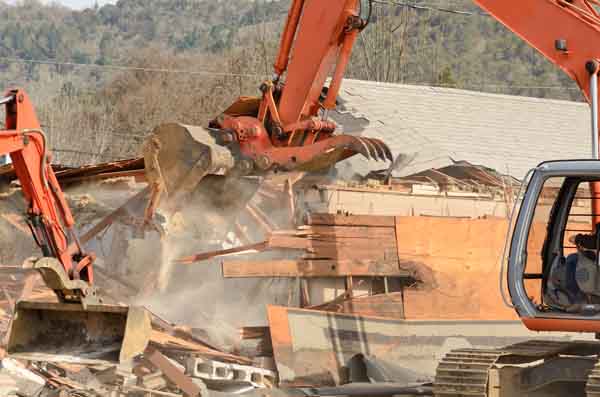If you have purchased a piece of property with a home or building that you do not want, you might be considering a teardown. Frequently, the home or building is larger, or more efficient than the previous one. The reasons for a teardown can include increasing the appeal of the property, or taking advantage of rising property values. The process is common in older suburbs where people want larger homes, or where a more modern business structure is desired.
Replacement often brings modernization, new structures being built to modern building codes, energy efficiency standards, and aesthetics. It may be a different architectural style, thus not fitting the historic character of the neighborhood. However, not all older homes have historical or architectural value. An existing home or building may have no value relative to the land its on, and therefore a newer, more modern structure is a good option.
The redevelopment of brownfield land also usually involves teardowns; for example, Rockefeller Center was built on land vacated by tearing down older buildings. However, the term is more widely used in residential areas.
By tearing down older, functionally obsolete houses whose main value is in the land they’re built on, it’s possible to create up-to-date homes that are either built for specific purchasers or sold on speculation in the regular real estate marketplace.
Though the term “teardown” was associated with outsized McMansions during the housing boom years, today most buyers and builders replace the houses they demolish with new homes that are more in sync with the surrounding neighborhood. Teardowns are also welcomed by some local governments as property tax revenue enhancers since they produce replacement houses that cost much more than the home that was demolished.
Teardowns can be complicated. They involve permits, understanding the zoning, knowing if there is any historic preservation issues or demolition challenges that you might face.
Here’s a quick guide to help you answer the core question — is a teardown and custom-built replacement be a smart move?
How do I recognize a house that is a teardown candidate?
Potential teardowns almost always are houses that aren’t quite up to current standards in sought-after, attractive neighborhoods. They may be smaller-than-average in square footage, have outdated kitchens, lack sufficient bathrooms and are energy guzzlers.
They may have serious structural issues that make them difficult to sell because of the cost of repairs. As such, they tend to be priced below the prevailing average for their street or neighborhood and often sit unsold longer than others, unless their sellers are actively marketing them as prospective teardowns.
Do you have to knock down the entire structure?
Actually, no. For instance, you may be able to retain the existing foundation, or add to it. You might be able to retain a portion of an existing wall, or incorporate part of the old structure into your new design, and thereby sidestep a complete teardown.
Renovation or teardown, how do you decide?
Usually the key factors are the current condition of the house or building, and what your end desire is.
Older structures can have severe problems that make them financially unfeasible to repair, such as heavy infestations of mold or pests, extensive water damage undermining the foundation or footings or roof damage from wind or rot. They often have interior layouts that are difficult to rearrange for modern uses and outmoded components that all need to be replaced — at significant cost — whether you tear the house down or try to renovate it.
Ask yourself: Do I want a home that is energy efficient, from windows and doors to kitchen appliances? Wired for all the sophisticated electronics we use today? With room layouts that make sense for the style of living you want for you and your family? If you can’t get what you want at a reasonable cost by renovating, then demolition and new construction may be the better option.
Are there local restrictions that could affect my decision?
Probably. Most of the older, more desirable close-in communities in Toledo have land-use rules and codes that are intended to protect the existing character of the town or neighborhood. Others have historic preservation districts that ban most teardowns or require replacement structures to strictly adhere to the predominant architectural size and standards of the neighborhood.
At E & K Contractors, our team can help you determine the best possible way to execute your teardown. We own and operate state of the art equipment, and can get the job done safely, and professionally. We are happy to come out and prepare a free, no obligation quote for you.

